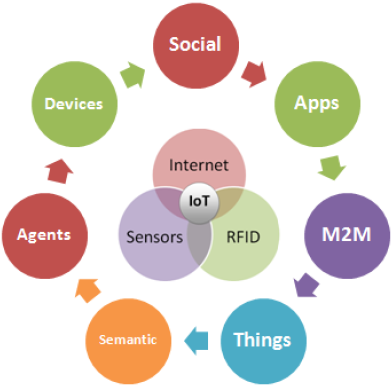Folks, we’ve got to talk about some of the headlines about the Internet of “Things”. If you’ve been paying even no attention to that space, you know that pretty much everything getting released is some combination of several WTFs, whether in conception, implementation, and let’s not forget security.

I get it. It’s a gold-rush business. We’ve got computers that are so small, so cheap, and so power-efficient, that we can slap the equivalent of a 1980s super-computer in a toilet seat. There's the potential to create products that make our lives better, that make the world better, and could carry us into a glowing future. It just sometimes feels like that's not what anybody's actually trying to make, though. Without even checking, I’m sure you can buy a WiFi enabled fidget spinner that posts the data to a smartphone app where you can send “fidges” to your friends, bragging about your RPMs.
We need this news-roundup, because when Alexa locks you out of your house because you didn’t pay for Amazon Prime this month, we can at least say “I told you so”. You think I’m joking, but Burger King wants in on that action, with its commercial that tries to trick your Google Assistant into searching for burgers. That’s also not the first time that a commercial has trigged voice commands, and I can guarantee that it isn’t going to be the last.
Now, maybe this is sour grapes. I bought a Nest thermostat before it was cool, and now three hardware generations on, I’m not getting software updates, and there are rumors about the backend being turned off someday. Maybe Nest needs a model more like “Hive Hub”. Hive is a startup with £500M invested, making it one of the only “smart home” companies with an actual business model. Of course, that business model is that you’ll pay $39.99 per month to turn your lights on and off.
At least you know that some of that money goes to keeping your smart-home secure. I’m kidding, of course- nobody spends any effort on making these devices secure. There are many, many high profile examples of IoT hacks. You hook your toaster up to the WiFi and suddenly it’s part of a botnet swarm mining BitCoins. One recent, high-profile example is the ZigBee Protocol, which powers many smart-home systems. It’s a complete security disaster, and opens up a new line of assault- instead of tricking a target to plug a thumb drive into their network, you can now put your payload in a light bulb.
Smart-homes aside, IoT in general is breeding ground for botnets. Sure, your uncle Jack will blindly click through every popup and put his computer password in anything that looks like a password box, but at least you can have some confidence that his Windows/Mac/Linux desktop has some rudimentary protections bundled with the OS. IoT vendors apparently don’t care.
Let’s take a break, and take a peek at a fun story about resetting a computerized lock. Sure, they could have just replaced the lock, but look at all the creative hackery they had to do to get around it.
With that out of the way, let’s talk about tea. Ever since the Keurig coffee maker went big, everyone’s been trying to be “the Keurig for waffles” or “the Keurig for bacon” or “the Keurig for juice”- the latter giving us the disaster that is the Juicero. Mash this up with the Internet of Things, and you get this WiFi enabled tea-maker, which can download recipes for brewing tea off the Internet. And don’t worry, it’ll always use the correct recipe because each pod is loaded with an RFID that not only identifies which recipe to use, but ensures that you’re not using any unathorized tea.
In addition to the “Keurig, but for $X,” there’s also the ever popular “the FitBit, but for $X.” Here’s the FitBit for desks. It allows your desk to nag you about getting up, moving around, and it’ll upload your activity to the Internet while it’s at it. I’m sure we’re all really excited for when our “activity” gets logged for future review.
Speaking of FitBits, Qualcomm just filed some patents for putting that in your workout shoes. This is actually not a totally terrible idea- I mean, by standards of that tea pot, anyway. I share it here because they’re calling it “The Internet of Shoes” which is a funny way of saying, “our marketing team just gave up”.
Finally, since we’re talking about Internet connected gadgets that serve no real purpose, Google Glass got its first software update in three years. Apparently Google hasn’t sent the Glass to a farm upstate, where it can live with Google Reader, Google Wave, Google Hangouts, and all the other projects Google got bored of.

